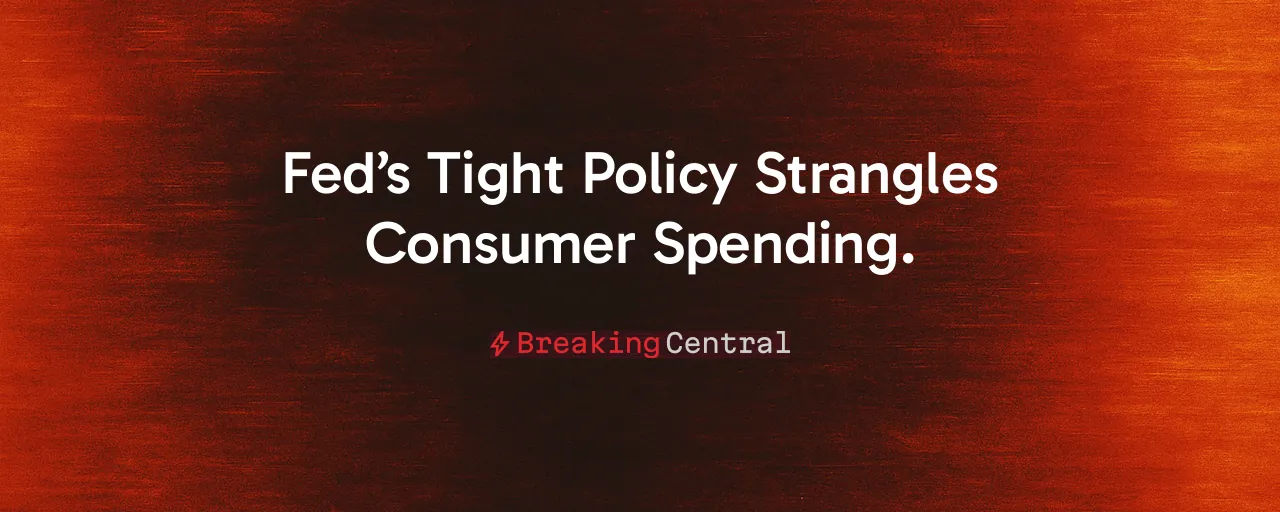Consumer Spending Hits a Wall
U.S. retail sales took a hit in May 2025, falling 0.9% from April, worse than the 0.7% decline economists predicted. The Commerce Department reported total sales at $715.4 billion, up 3.3% from May 2024, but the monthly drop, led by a 3.5% slump in motor vehicles and 2.7% in building materials, points to growing consumer caution. What's driving this retreat? A combination of policy uncertainty, high borrowing costs, and inflation's lingering effects offers some answers.
For supporters of free-market principles, this decline raises red flags. Economists from the Heritage Foundation and the Wall Street Journal editorial board see it as evidence that consumers are retrenching as stimulus fades and tariff concerns loom. Despite a 0.4% rise in control-group sales, which contribute to GDP, the broader weakness prompts a pressing question. Is this a temporary dip, or a sign of deeper economic trouble?
Blaming Policy Missteps
Advocates for limited government view the retail sales drop as a consequence of regulatory burdens and monetary policy errors. The Heritage Foundation highlights that sectors like autos and building materials, hit hard by energy costs and compliance rules, are struggling under policies from prior administrations. They argue that the 2017 Tax Cuts and Jobs Act fueled spending, but its temporary provisions need permanence to sustain growth. Deregulation, they contend, would lower costs for businesses and restore household confidence.
The Federal Reserve's high-rate stance draws sharp criticism. Holding rates at 4.25–4.50% since December 2024, the Fed has pushed auto loan rates to 8% and mortgage rates to 6.8%, curbing big-ticket purchases. Free-market analysts argue this caution, tied to tariff-related inflation fears, is overly restrictive. Historical patterns, like the 1994-95 tightening cycle, show sales rebound after rate cuts, but with markets expecting just 30 basis points of easing by late 2025, relief remains elusive.
Inflation's Persistent Pressure
Even with headline inflation at 2.4% year-over-year, essentials like shelter (up 4%), groceries (2.4%), and electricity (2.8%) keep costs high. Real wages, only 1.4% above last year, struggle to offset these pressures. With pandemic savings nearly gone and revolving credit at $1.37 trillion, lower-income households are turning to private-label goods and discount stores. This mirrors the 1970s, when tight monetary policy eventually curbed inflation, allowing wage gains to rebuild purchasing power. Are consumers adapting, or nearing a breaking point?
Free-market proponents argue that the price level, 18% above 2019, stems from excessive stimulus and regulatory bottlenecks. They warn that without reforms, like easing energy-sector rules or streamlining permitting, inflation will continue to choke discretionary spending. Categories like electronics (down 2.3% year-over-year) and furniture (down 1.4%) reflect this squeeze, underscoring the need for policies that prioritize economic efficiency.
A Shift Toward Services
Consumers are redirecting their dollars, favoring services over goods. Real services spending rose 7% from last year, with travel and entertainment up 11% and 9%, while goods spending grew just 1%. High interest rates and pandemic-era durable-goods saturation have cooled electronics and furniture sales. Long-term data show services climbing from 27% of spending in the 1940s to over 60% today. E-commerce, steady at 15% of retail, sees 12% growth in buy-online-pick-up-in-store orders, blending cost-consciousness with convenience.
Supporters of market-driven policies argue that this shift highlights the need to revitalize goods sectors. Reducing regulatory costs for retailers could spur investment, balancing spending patterns. May's 0.2% GDP drag, though small, signals risks if goods weaken further. Rising credit-card delinquencies at 2.8%, a 14-year high, and $7 billion monthly losses from student-loan repayments underscore the urgency of restoring consumer confidence.
Navigating Recession Risks
Recession odds range from 40-55% within a year, fueled by flat credit-card spending and 30% of adults cutting retail and dining. Yet, 175,000 monthly job gains and a low debt-service ratio provide stability. Free-market economists, skeptical of government intervention, predict a slow-growth scenario over a sharp downturn. Historical data suggest consumer spending holds up before recessions, unlike business investment, reinforcing the case for private-sector solutions.
The solution, from this perspective, lies in pro-market reforms. Permanent tax cuts, lighter regulations, and a less restrictive Fed could lift demand, especially in rate-sensitive sectors. The 1980s supply-side reforms and 2017 tax cuts demonstrate that such policies drive retail and economic growth. With holiday sales approaching, May's data demands action to avert a broader slowdown.
The retail sales decline reflects inflation, high rates, and shifting consumer priorities. While service spending and wages offer some stability, weaknesses in goods and rising delinquencies require vigilance. For those championing economic freedom, the path is clear: empower businesses and households through lower taxes and fewer rules to secure a robust recovery.
